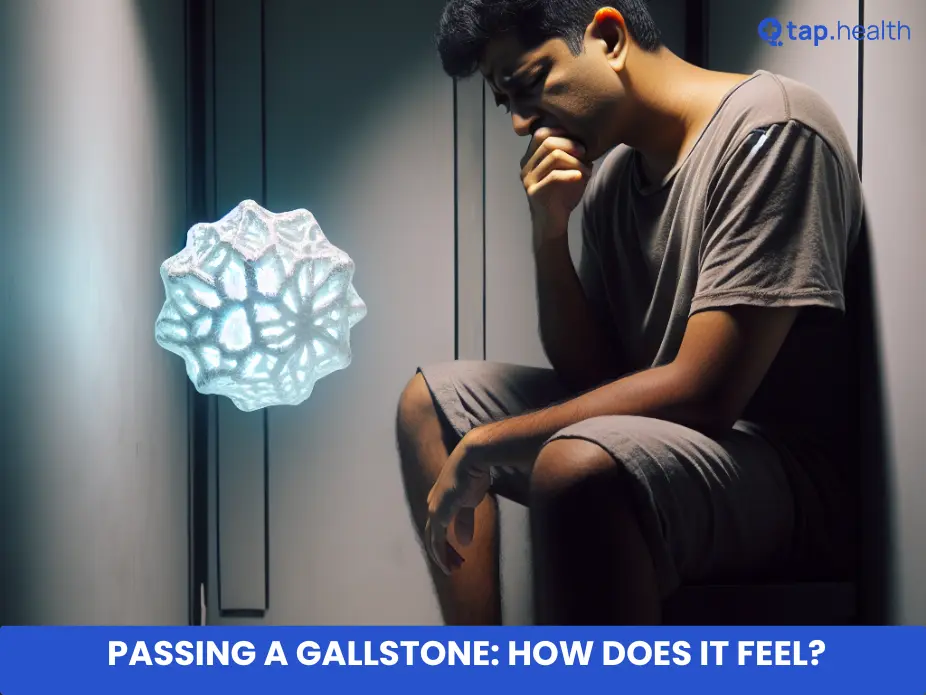Table of Contents
- Diabetes & Retinal Detachment: What You Need To Know
- Understanding the Link Between Diabetes and Retinal Tears
- Warning Signs of Retinal Detachment in Diabetics
- How Diabetes Increases Your Risk of Retinal Detachment
- Protecting Your Eyesight: Diabetes and Retinal Detachment Prevention
- Frequently Asked Questions
- References
Living with diabetes comes with its challenges, and understanding potential complications is key to managing your health effectively. One serious complication that often goes unnoticed is the link between diabetes and retinal detachment. This condition, where the retina separates from the back of the eye, can lead to significant vision loss if not addressed promptly. In this blog post, we’ll explore the connection between these two conditions, highlighting the increased risks associated with diabetes and providing you with crucial information on recognizing the warning signs. Learning about diabetes and retinal detachment empowers you to take proactive steps towards protecting your eyesight.
Diabetes & Retinal Detachment: What You Need To Know
Diabetes significantly increases your risk of developing serious eye complications, including retinal detachment. This is particularly crucial to understand in Indian and tropical countries, where diabetes prevalence is high. The connection is strong: damage to blood vessels caused by high blood sugar levels weakens the retina, making detachment more likely. Think of it like a weakened net – more susceptible to tearing.
Understanding the Risks
Diabetic retinopathy, a common complication of diabetes, is a major precursor to retinal detachment. It involves damage to the blood vessels in the retina, leading to bleeding, swelling, and ultimately, a weakened retinal structure. This weakening increases vulnerability to detachment, where the retina separates from the underlying tissue. Nearly 30% of people with diabetes develop diabetic nephropathy (kidney disease), highlighting the systemic nature of the disease and its potential impact on delicate organs like the eyes. Early detection is key to preventing irreversible vision loss.
Warning Signs to Watch For
Symptoms of retinal detachment can be subtle at first, making regular eye exams crucial, especially for individuals with diabetes. Be vigilant for sudden flashes of light, floaters (dark spots or specks in your vision), blurred vision, or a curtain-like effect obscuring your vision. These signs, if experienced, require immediate medical attention. In tropical climates, exposure to intense sunlight can further exacerbate eye conditions, underscoring the need for protective measures. For more information on protecting your vision with diabetes, check out our article on How to Protect Your Vision with Diabetes: Essential Eye Care Tips.
Taking Action
Regular comprehensive eye examinations are essential for individuals with diabetes in India and across tropical countries. Don’t delay seeking professional help if you experience any of the warning signs. Early diagnosis and treatment can significantly improve the chances of preserving your vision. Schedule your eye exam today and protect your sight. It’s also important to be aware of other potential complications of diabetes; for example, learn more about the connection between diabetes and hair loss by reading our article on Does diabetes cause hair thinning: What You Need to Know.
Understanding the Link Between Diabetes and Retinal Tears
The Silent Threat of Diabetic Retinopathy
Diabetes significantly increases the risk of various eye complications, with diabetic retinopathy being a major concern. This condition damages the blood vessels in the retina, the light-sensitive tissue at the back of the eye. Over time, this damage can lead to retinal tears and detachment, potentially causing severe vision loss or even blindness. The increased risk is particularly relevant in high-prevalence regions like India and other tropical countries where diabetes is on the rise. It’s crucial to understand that even seemingly minor vision changes could signal a serious underlying issue.
From Blood Vessel Damage to Retinal Tears
High blood sugar levels characteristic of diabetes damage the tiny blood vessels in the retina. This damage can manifest as tiny aneurysms, blockages, or the growth of abnormal blood vessels. These weakened and compromised vessels are more prone to leaking, bleeding, and eventually, tearing. A retinal tear can lead to retinal detachment, a serious condition where the retina separates from the underlying tissue. This separation disrupts the transmission of visual signals to the brain, resulting in vision loss. Early detection and treatment are vital to preventing irreversible damage.
Recognizing the Warning Signs and Seeking Help
Common symptoms of diabetic retinopathy include blurry vision, floaters (spots or specks in your vision), and impaired night vision. However, in the early stages, many people experience no symptoms at all. Regular eye exams are therefore essential, especially for individuals with diabetes. In India and other tropical countries, accessing quality eye care can sometimes be challenging; proactive steps towards preventative care are crucial. Schedule a comprehensive eye examination with an ophthalmologist to assess your risk and ensure timely intervention. Early detection and management of diabetes, along with regular eye checks, can significantly reduce the risk of retinal tears and detachment. Remember, even though diabetes is linked to a 70% increased risk of sleep apnea, prioritizing eye health is equally important for overall well-being. While this article focuses on eye health, it’s worth noting the connection between diabetes and other health issues, such as Does Diabetes Cause Hair Loss? Understand the Connection. The impact of diabetes extends beyond vision, affecting various systems in the body. For more information on the connection between diabetes and hair loss, you may also find Diabetes and Hair Loss: Is There a Connection helpful.
Warning Signs of Retinal Detachment in Diabetics
Diabetes significantly increases the risk of various eye complications, including retinal detachment. Early detection is crucial to preserving vision, especially in high-risk populations prevalent in Indian and tropical countries. Recognizing the warning signs is paramount, as delayed treatment can lead to irreversible vision loss.
Visual Disturbances
Diabetics should be particularly vigilant about sudden changes in vision. These can manifest as floaters – small spots or specks that drift across your vision – or flashes of light, especially in the peripheral vision. The appearance of a veil or curtain obscuring part of your vision is a particularly urgent warning sign and necessitates immediate medical attention. These symptoms often indicate a retinal tear or detachment, a serious condition that requires prompt intervention.
Other Important Symptoms
Beyond the prominent visual disturbances, other less obvious symptoms may point towards retinal problems. These include blurred vision, distortion of shapes or straight lines appearing wavy (metamorphopsia), and reduced visual acuity. It’s important to note that these symptoms can be subtle initially and easily overlooked, especially in individuals with pre-existing diabetic retinopathy. Regular eye exams are therefore essential for diabetics, even in the absence of obvious symptoms. To understand the recommended frequency of these exams, please refer to our article on How Often is Diabetic Eye Screening?.
Seeking Prompt Medical Care
Given the high prevalence of diabetic complications, including foot ulcers – nearly 15% of diabetics experience foot ulcers in their lifetime, with high amputation risks – proactive healthcare is vital. Similarly, prompt attention to eye health is crucial. If you experience any of these symptoms, seek immediate consultation with an ophthalmologist. Early diagnosis and treatment significantly improve the chances of successful retinal reattachment and vision preservation. Don’t delay; your eyesight depends on it. If you suspect you may have diabetes, it’s crucial to learn about the early warning signs. You can read more about 10 Early Signs and Symptoms of Diabetes? to understand the condition better.
How Diabetes Increases Your Risk of Retinal Detachment
Understanding the Connection
Diabetes significantly raises your risk of retinal detachment, a serious eye condition where the retina—the light-sensitive tissue lining the back of your eye—separates from the underlying blood vessels. This separation can lead to vision loss, and in severe cases, blindness. The link is primarily due to the damage diabetes inflicts on blood vessels throughout the body, including those in the eyes. High blood sugar levels weaken these vessels, making them more prone to leaking, swelling, and even rupture. This process, known as diabetic retinopathy, is a major precursor to retinal detachment. In tropical and Indian climates, where certain underlying health conditions are more prevalent, the risk may be further amplified.
Diabetic Retinopathy: The Primary Risk Factor
Diabetic retinopathy is characterized by damage to the blood vessels in the retina. This damage can manifest as either non-proliferative (NPDR) or proliferative (PDR) retinopathy. NPDR involves microaneurysms (tiny bulges in the blood vessels) and hemorrhages (bleeding). PDR is more severe, involving the growth of abnormal blood vessels that can leak and scar the retina, increasing the likelihood of retinal detachment. These complications highlight the critical need for regular eye examinations, especially for individuals with diabetes. The increased mortality rate among smokers with diabetes, as high as double that of non-smokers due to cardiovascular complications (a crucial factor in retinal health), further emphasizes the importance of proactive care. Regular eye checks are vital in preventing severe complications.
Protecting Your Vision: Actionable Steps
Maintaining tight control of your blood sugar levels is paramount in reducing the risk of diabetic retinopathy and subsequent retinal detachment. This involves adhering strictly to your doctor’s prescribed treatment plan, including medication and lifestyle adjustments. Regular eye exams are essential for early detection and management of any complications. For individuals in Indian and tropical countries, where access to healthcare may vary, proactive engagement with local ophthalmologists and community health initiatives is vital for protecting your vision. Seek immediate medical attention if you experience any sudden changes in your vision, such as flashing lights, floaters, or a curtain-like effect. Early intervention is key to preserving your sight. Diabetes can affect many parts of the body; for instance, learn more about how it can impact the respiratory system in our article, How Does Diabetes Affect the Respiratory System?. The effects of diabetes are wide-ranging, and understanding these is crucial for managing the condition effectively. For example, you might also find our article on Does Diabetes Cause Thinning Hair? informative.
Protecting Your Eyesight: Diabetes and Retinal Detachment Prevention
Understanding the Risks
Diabetes can significantly impact your vision, increasing the risk of retinal detachment—a serious condition that can cause partial or complete vision loss if not treated promptly. This issue is particularly concerning in India and other tropical countries, where diabetes rates are rapidly increasing.
According to the International Diabetes Federation, around 61% of people with diabetes are aged between 20–64 years, while 39% are over 65. These demographics highlight the importance of early detection and preventive eye care across all age groups. Moreover, warmer climates and limited access to specialized ophthalmic care in some tropical regions can make diabetes management—and therefore vision protection—even more challenging.
Early Detection and Prevention
The best defense against diabetes-related eye complications is routine monitoring. If you have diabetes, make it a habit to schedule a comprehensive dilated eye exam at least once a year—or more often if your doctor recommends it.
These check-ups help detect diabetic retinopathy early, a common condition that can progress to retinal detachment if untreated. Regular screenings allow for timely treatment, preventing severe damage to the retina and preserving vision.
Individuals in high-risk age groups (20–64 and 65+) should pay particular attention to eye health, as the risk of retinal complications increases with the duration of diabetes and poor blood sugar control.
Lifestyle Modifications for Eye Health
Managing diabetes effectively is the cornerstone of protecting your eyesight. This includes:
-
Maintaining stable blood sugar levels through a balanced diet, regular exercise, and adherence to prescribed medications.
-
Controlling blood pressure and cholesterol, as these factors further strain blood vessels in the eyes.
-
Avoiding smoking and excessive alcohol consumption, both of which accelerate diabetic eye damage.
In tropical and Indian contexts, where dietary patterns and lifestyle options differ, it’s important to adapt healthy practices that are locally accessible and sustainable—for example, incorporating seasonal fruits, fresh vegetables, and daily walking routines.
When to Seek Immediate Help
Seek prompt medical attention if you experience:
-
Sudden blurry or distorted vision
-
Flashes of light or new floaters
-
A dark curtain or shadow over part of your vision
These symptoms could signal retinal detachment or another urgent eye issue. Early diagnosis and treatment can often prevent permanent vision loss.
If you notice any of these changes, consult an ophthalmologist immediately. Quick action can make all the difference in saving your sight.
Key Takeaway
Your eyes are among the most sensitive organs affected by diabetes—but with regular eye exams, good glucose control, and a healthy lifestyle, you can significantly reduce your risk of retinal detachment and other vision-threatening complications.
Stay vigilant, act early, and make proactive eye care an essential part of your diabetes management plan.
Frequently Asked Questions
Q1. How does diabetes increase my risk of retinal detachment?
High blood sugar damages the blood vessels in your retina, leading to diabetic retinopathy. This weakens the retina, making it more prone to tears and detachment from the underlying tissue.
Q2. What are the early warning signs of retinal detachment?
Early symptoms include flashes of light, floaters (small spots or specks in your vision), blurred vision, and a curtain-like effect in your vision. If you experience any of these, seek immediate medical attention.
Q3. How can I reduce my risk of retinal detachment if I have diabetes?
Maintaining controlled blood sugar levels through diet, exercise, and medication is crucial. Regular comprehensive eye exams are also vital for early detection and treatment.
Q4. Why are people from India and tropical countries at higher risk?
The prevalence of diabetes is significantly higher in these regions, leading to a greater number of cases of diabetic retinopathy and subsequently, retinal detachment.
Q5. What is the importance of early diagnosis and treatment?
Prompt diagnosis and treatment are vital for preserving your vision. Early intervention can significantly improve the chances of successful treatment and preventing irreversible vision loss.
References
- A Practical Guide to Integrated Type 2 Diabetes Care: https://www.hse.ie/eng/services/list/2/primarycare/east-coast-diabetes-service/management-of-type-2-diabetes/diabetes-and-pregnancy/icgp-guide-to-integrated-type-2.pdf
- AI-Driven Diabetic Retinopathy Screening: Multicentric Validation of AIDRSS in India: https://arxiv.org/pdf/2501.05826



